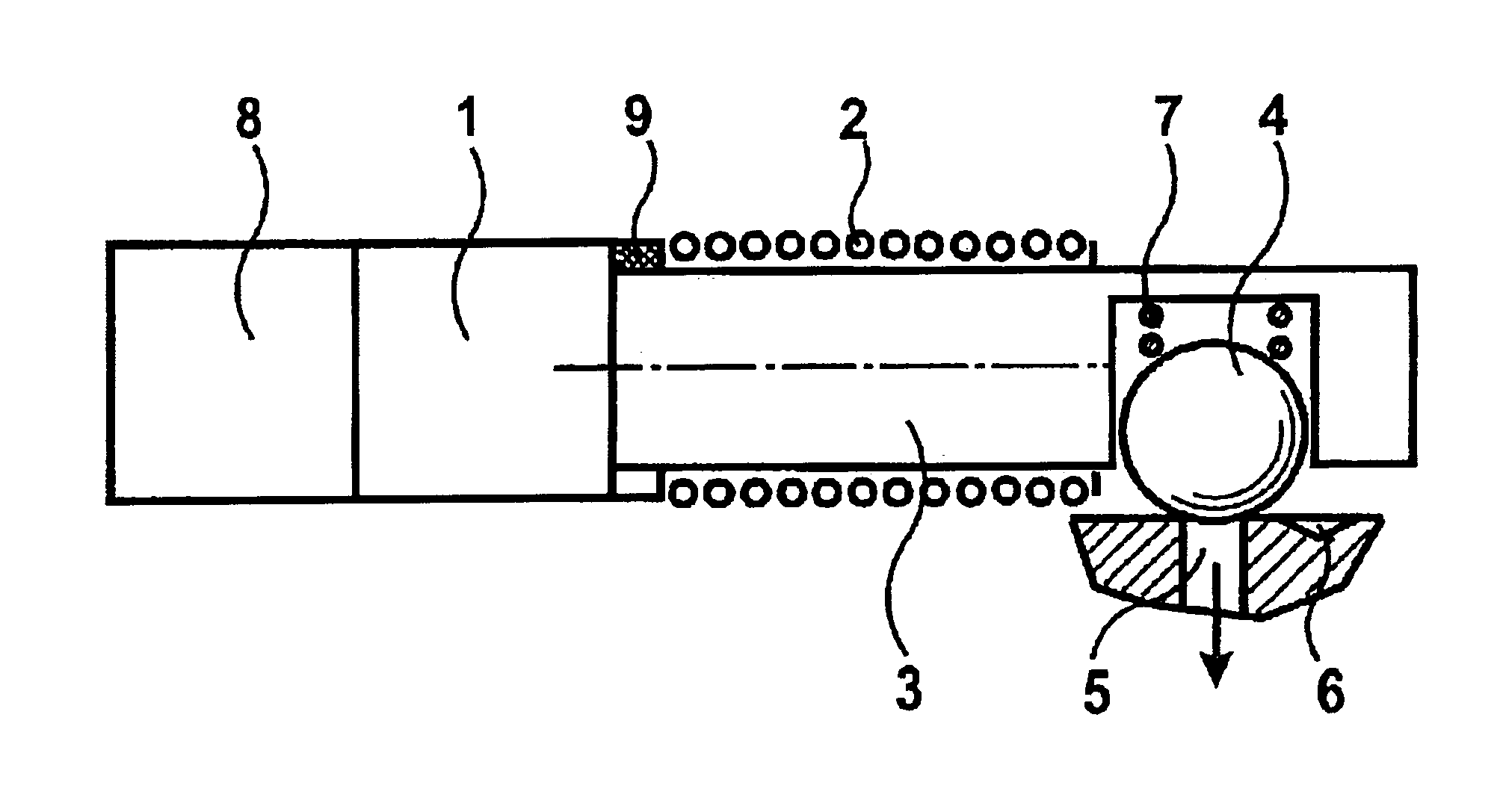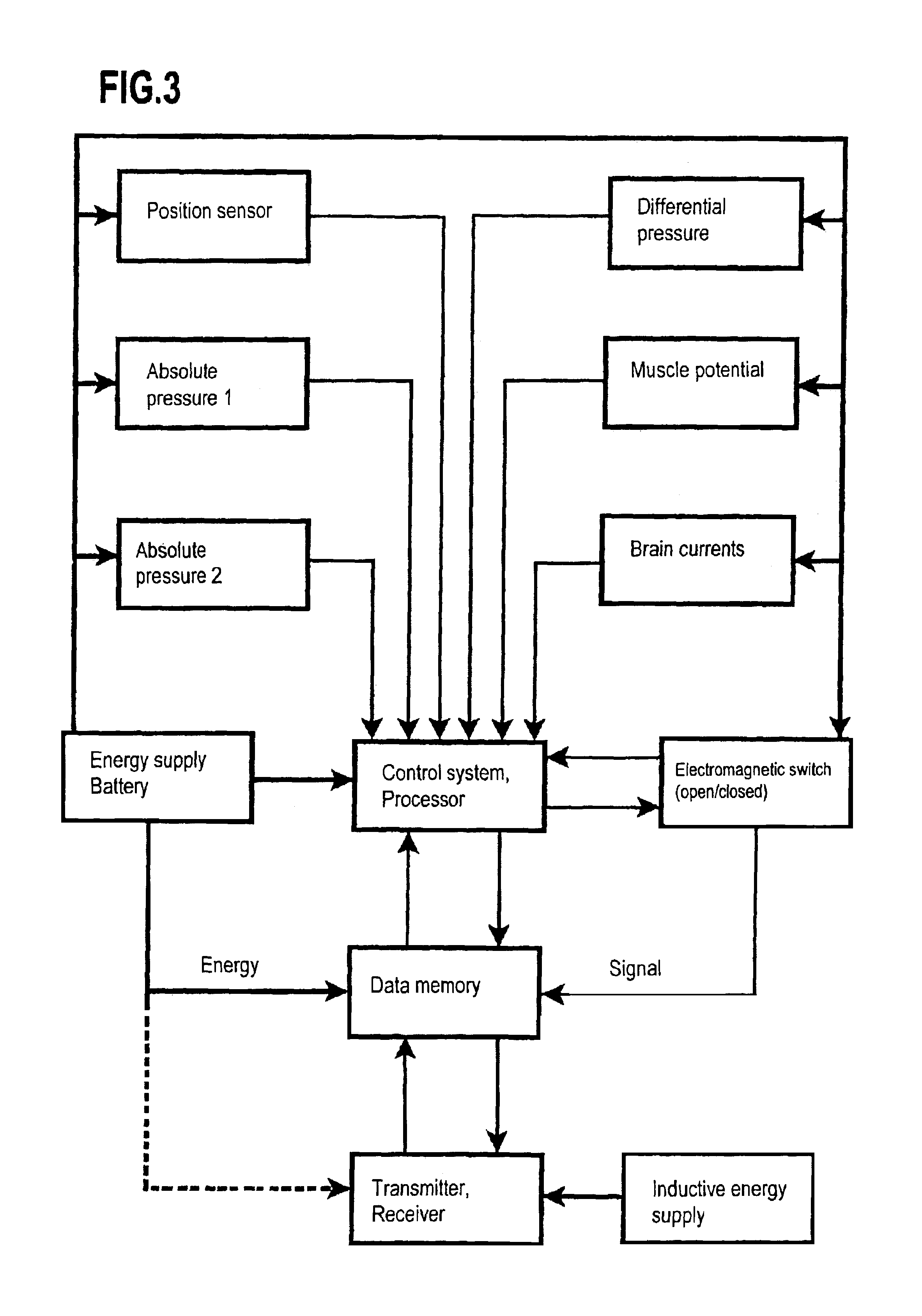Hydrocephalus valve
a technology of hydrocephalus and valve body, which is applied in the direction of wound drains, intravenous devices, medical devices, etc., to achieve the effect of improving the adaptation of fluid drainage, reliably and simply constructed
- Summary
- Abstract
- Description
- Claims
- Application Information
AI Technical Summary
Benefits of technology
Problems solved by technology
Method used
Image
Examples
Embodiment Construction
[0048]The hydrocephalus valve system shown in the drawings comprises an energy unit (battery), a processor, a data memory, an electromagnetic switch, a transmitting and receiving unit and optionally a unit for inductive energy supply. FIG. 1 shows the block diagram for the mode of operation of the invention.
[0049]FIG. 1 shows the simplest mode of construction of a valve system. A time-dependent control signal s(t) is input into the data memory via the transmitter. The control signal s(t) contains control information which can be individually set up for each patient about the opening state of the electromagnetic switch at each point in time t. Thus, for example, the opening state at night can last longer than during the day. There is the possibility of setting up an individual profile according to the habits or needs of the patient. This opening profile can be adapted at any time to possible changes.
[0050]The data memory passes the information to the control unit which in turn contro...
PUM
 Login to View More
Login to View More Abstract
Description
Claims
Application Information
 Login to View More
Login to View More - R&D
- Intellectual Property
- Life Sciences
- Materials
- Tech Scout
- Unparalleled Data Quality
- Higher Quality Content
- 60% Fewer Hallucinations
Browse by: Latest US Patents, China's latest patents, Technical Efficacy Thesaurus, Application Domain, Technology Topic, Popular Technical Reports.
© 2025 PatSnap. All rights reserved.Legal|Privacy policy|Modern Slavery Act Transparency Statement|Sitemap|About US| Contact US: help@patsnap.com



